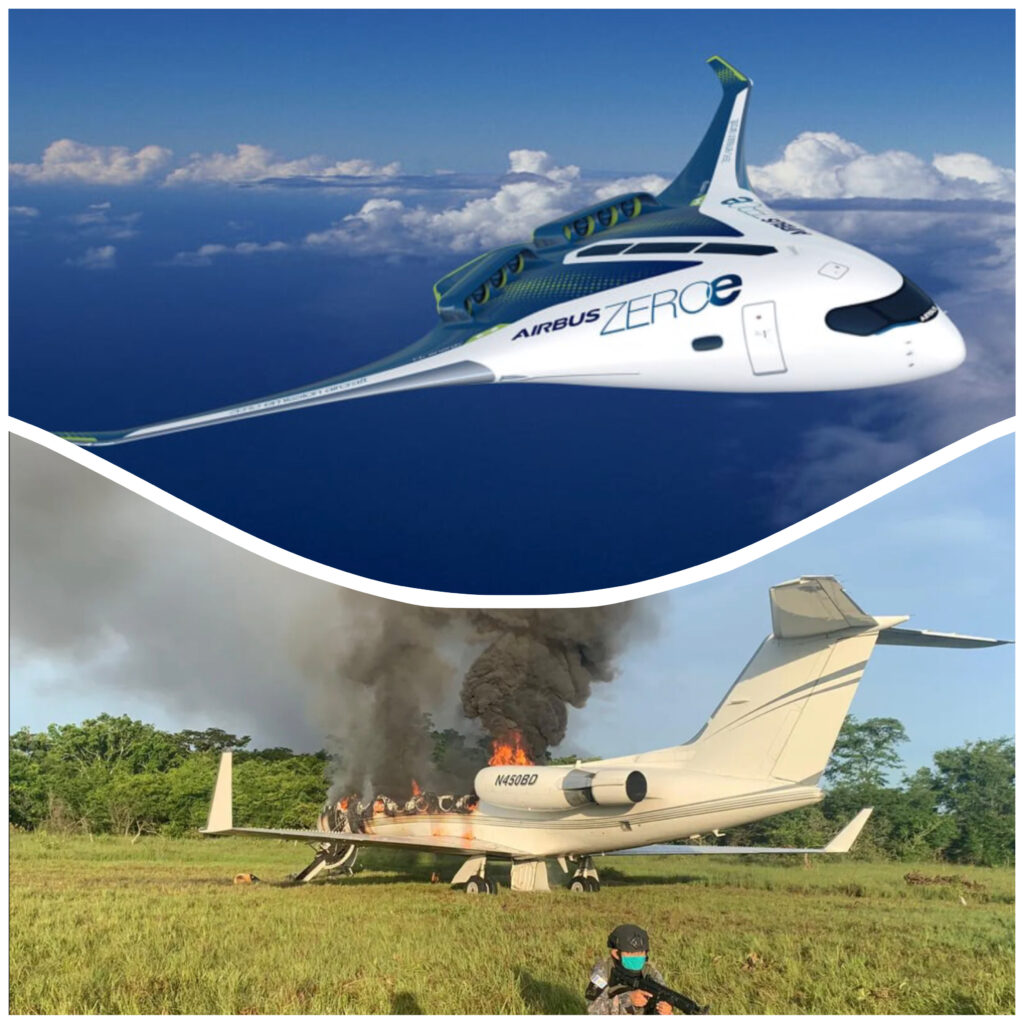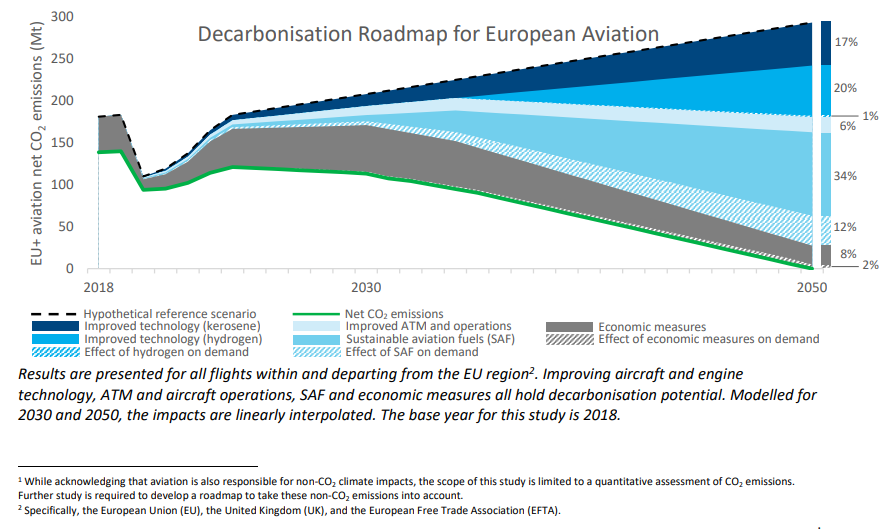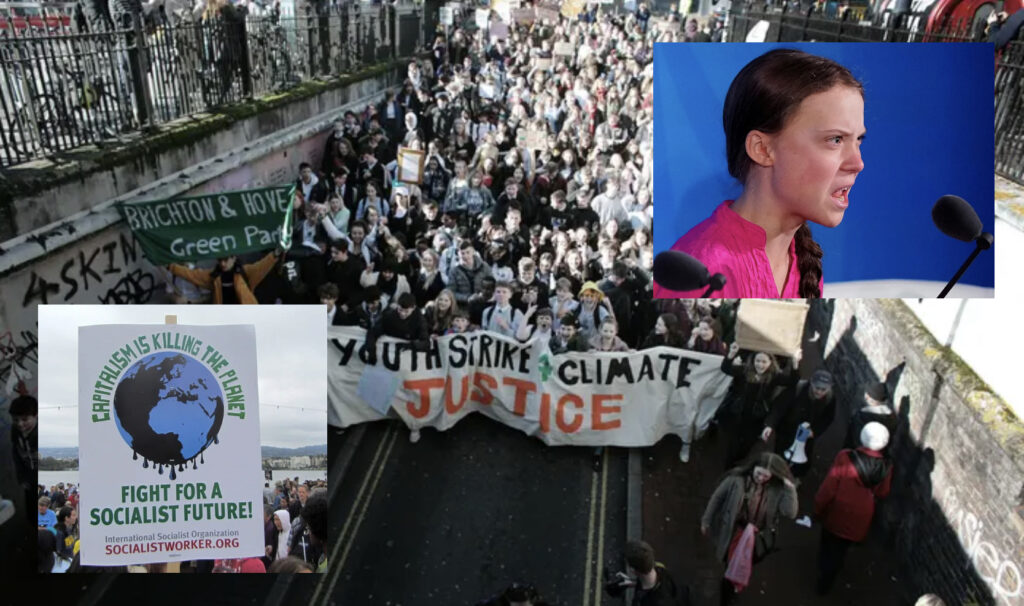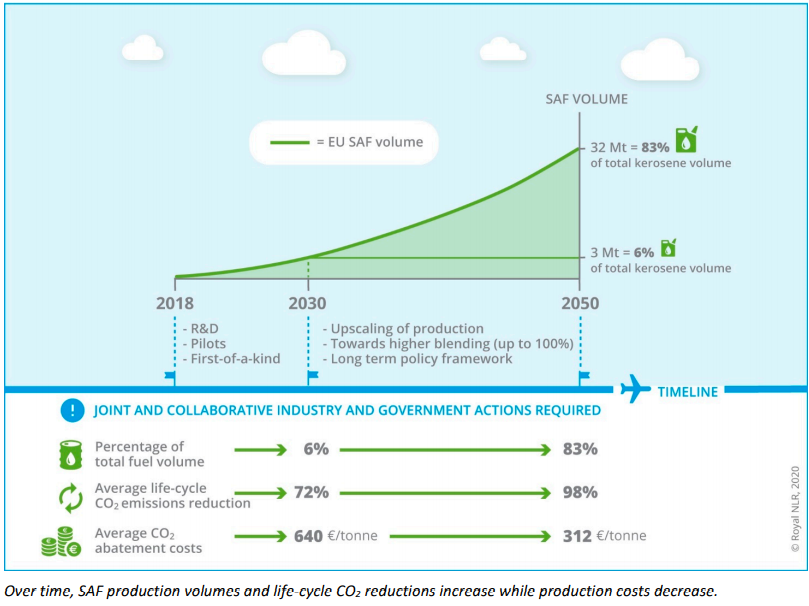
By Mark Brooks
Our planet is on fire and the status quo just doesn’t cut it. Although aviation produces only 2.5% of global carbon emissions, its role as the lynchpin of the global economy has made it a symbol of a net-zero carbon future. Two starkly different visions of that future present opposing paths for aviation on the journey to achieving net-zero carbon emissions in a new green economy.
One path is based on science, innovative engineering and new infrastructure. It harnesses a global free market to enable a doubling of current air traffic while achieving net-zero emissions.
The other is a political solution using the current pandemic as a model to promote using the power of government to restrict, punish and tax aviation out of existence. Not since the days of the Luddites in the 19th century, have we seen such a stark choice.
For years, the Aviation Industry, urged on by the reward of reducing fuel costs, and international organizations such as ICAO (International Civil Aviation Organization, a UN Agency), has been making dramatic strides in emissions efficiency. New aircraft, such as the Airbus 220, are achieving 2 litres per 100 km per passenger. In the span of 30 years, emissions per passenger has been cut in half. Flying to many destinations is now more carbon-efficient than driving a Vespa scooter. New technology such as SAF (Sustainable Aviation Fuels) and electric flight are on the horizon, and will allow the aviation industry to achieve even better efficiency, as well as net-carbon-zero emissions, in only a few decades.
This path is typified by the recently released European Union document Destination2050. This document envisions a growing industry reaching net-zero CO2 emissions by 2050 for all flights within and departing from Europe. It is an ambitious plan calling for coordinated aviation industry efforts supported by government incentives.
“Destination2050 shows a possible pathway that combines new technologies, improved operations, sustainable aviation fuels and economic measures. Absolute emissions are reduced by 92%, while the remaining 8% is removed from the atmosphere through negative emissions, achieved through natural carbon sinks or dedicated technologies.”
It is an ambitious and breathtaking vision that, while focused just on aviation, has implications that strike at heart of how our civilization and cities will be organized. The ability to fly straight as an arrow carbon free, road- or rail-free, will reduce the pressure to waste capital, farmland and carbon on building millions of miles of new highways and passenger rail lines around the world. It would make aviation not just the safest and fastest way to travel but also the most carbon-efficient as well as possibly the least expensive. It turns every airport into a logistics centre and every city into an aerotropolis.

The second path to net-zero aviation emissions is the opposite of the first. Instead of growth, it is a call for the shutdown of all but emergency aviation flights. Instead of using science and engineering to solve the problems caused by growing worldwide prosperity, it is a call to use political levers to shut down aviation and restrict all movement. It is typified by the Stay Grounded movement which envisions a forced shift away from an aviation-driven free market economy and all that it creates. In their vision paper “A Rapid and Just Transition of Aviation – Shifting towards climate-just mobility” Stay Grounded states:
“Aviation is a central part of globalized hyper-mobile capitalism … Changes in aviation therefore must be part of an overall societal transformation involving new modes of living, working, producing and consuming. Questions of how we consume, trade and travel; of who has power and who owns and has access to means of production, finance and technology, are all vital.”
Their visions would be enforced by government restrictions on freedom of movement including the destruction of most existing airports. New taxes, ranging from a kerosene tax, an air miles levy and an individual frequent flyer levy are described in another Stay Grounded report “Degrowth of Aviation”. This report exaggerates aviation emissions many times over in support of a political rather than a technical solution.
Two competing visions of aviation future in a net-zero carbon world. One, relying on science and engineering to harness the power of flight into the most efficient means of transportation the world has ever seen. The other, a political transformation of our economy that would shut down airports instead of building new ones. A future that would remove science and engineering progress from the equation and replace it with politically-motivated restrictions on how we move, produce and consume.

This political transformation is rooted in the anti-globalization and anti- capitalism movements. Aviation is just their current target.
If you think this is an unequal fight, pitting the titans of industry, engineering and science against a fringe political movement, think again. While the science of how to get to a net-carbon-zero economy is known, the engineering and free market economic challenges are many.
A recent ICAO report states that global aviation emissions can be reduced by 63% if the industry can just get to 100% SAF. A 50:50 SAF:Jet blend is approved for usage today with existing technology. Some existing GA (General Aviation) and utility aircraft, such as Diamond Aircraft’s new DA62, and DA40NG can run entirely on SAF (Bio Diesel). Unfortunately, SAF usage is only 1% today due to its lack of availability. But net-zero emissions and 100% SAF are achievable goals with appropriate political support and understanding of the science.

Unfortunately, the politics of the issue are laced with long-dead scientific hypotheses, such as the disproven contrail multiplier effect. To this day, contrail zombies are expediently resurrected to stalk the pages of political white papers, or line the pockets of clickbait news sites and unscrupulous carbon credit salesmen. Disinformation, such as 25% by 2050, (the lie that aviation emissions will grow to 25% of global emission by 2050) is being hyped to generate fear as a tool to be pushed and promoted for political effect.
As long as we are not lured into complacency or stopped by a crescendo of doomsayers, low-cost aviation with net-zero emissions will prove to be an astonishing growth engine. Future growth needs to be designed and built around the economic engine called an airport for maximum efficiency and minimum emissions. To save our planet, our cities need to become aerotropolises.
The path to net-zero emissions requires more than just new technologies, new fuels, and new locally-accessible aviation infrastructure. It also calls for clear thinking where science and engineering takes precedence over option and politics. It is time to think and act clearly with an eye on climate change, future prosperity, and the rights of mobility for all.
We need to stop confusing politically-driven options which promote misinformation as scientific fact. Our priority must not be to restrict and constrain, but to harness and direct. We must listen to the Science, not the Luddites. Now is time to unleash the power of human ingenuity, engineering and technology to build a net-zero carbon future full of infinite possibilities.
References:
ZEROe: Will Airbus’s zero-carbon airplane take off? | CNN Travel
w2050_full.pdf (aviationbenefits.org)
2019 Environmental Report (icao.int)
Degrowth-Of-Aviation_2019.pdf (stay-grounded.org)
Time to kill the Contrail Multiplier Zombie – Friends of Pickering Airport
Aviation 25% of carbon emissions by 2050 is a Myth – Friends of Pickering Airport
One thought on “Aviation’s Two Paths To A Net-Zero Carbon Future”
Comments are closed.